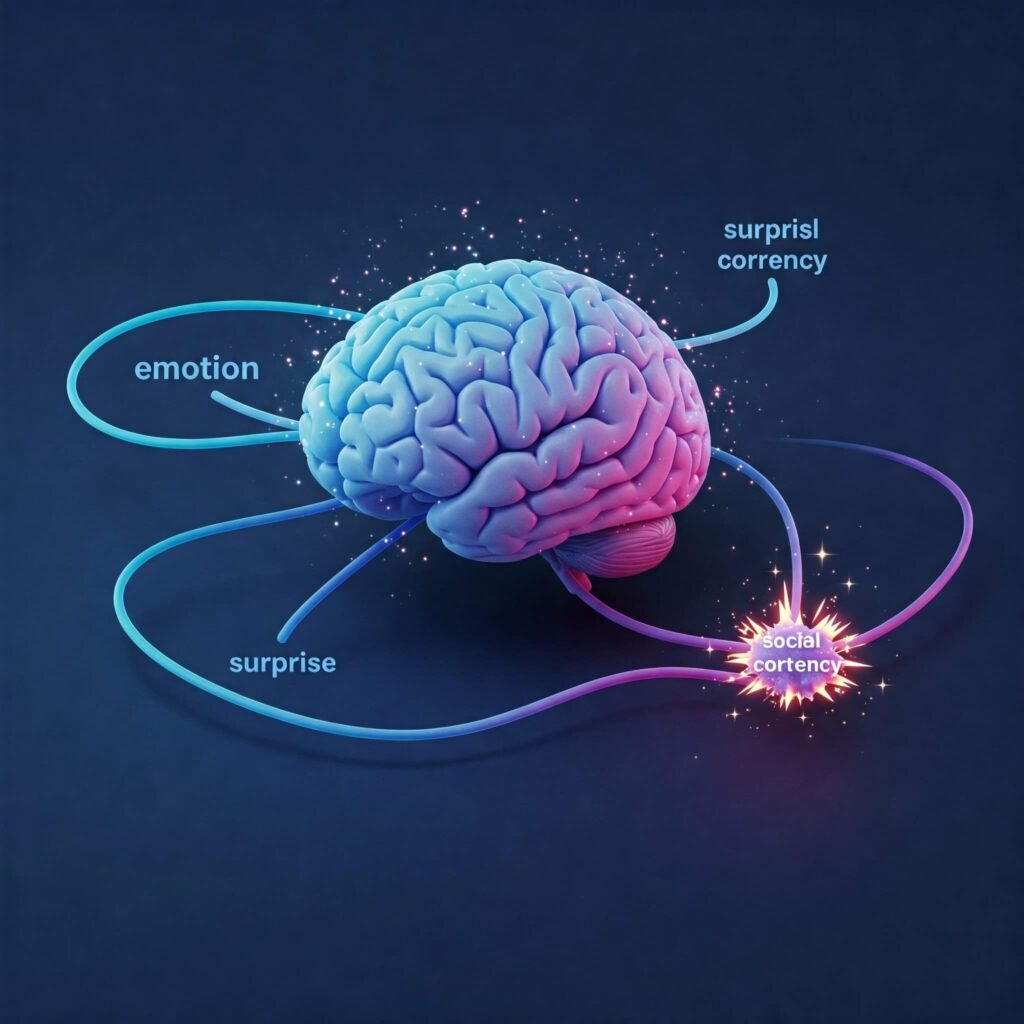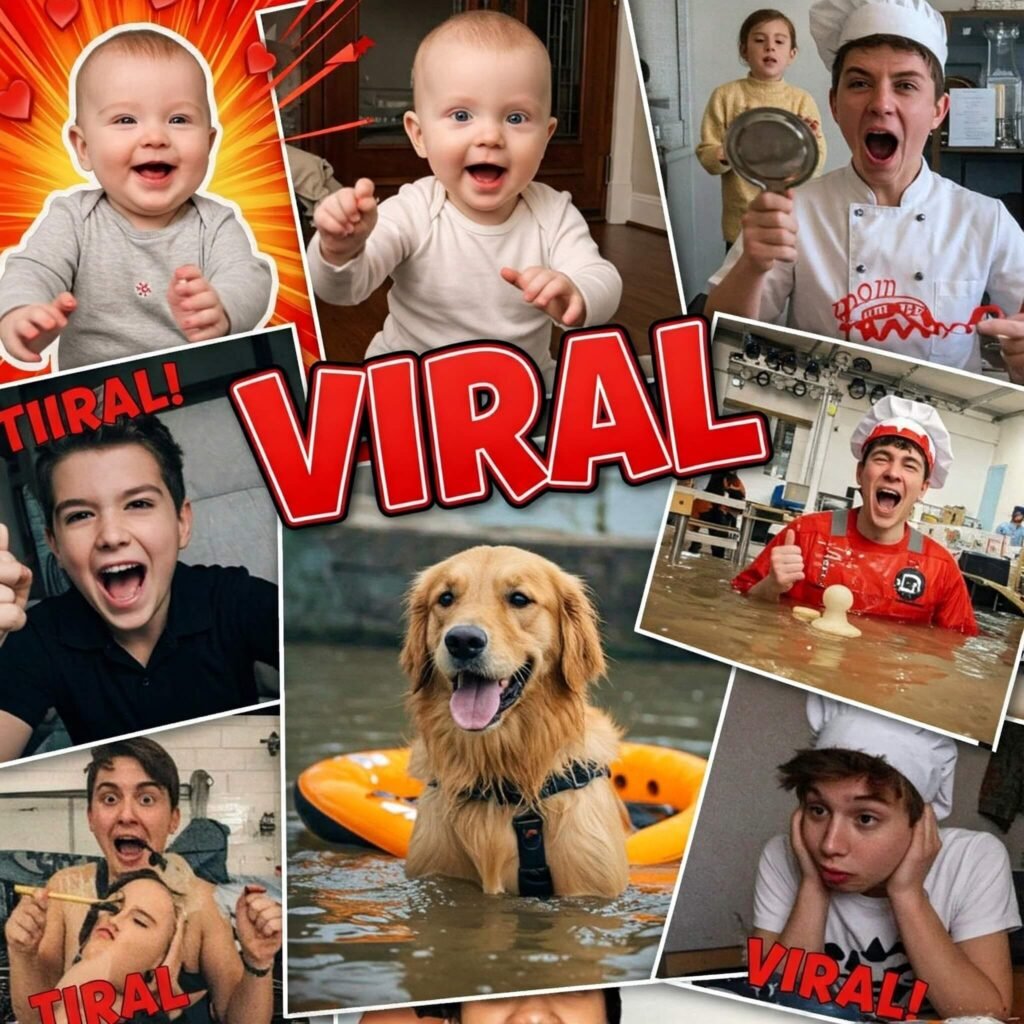Why videos go viral……..The short answer? Nobody actually knows for sure. The long answer? We have some pretty decent guesses—and most of them involve our messy little brains wanting to laugh, cry, or yell “oh my god same” at the exact same time as everyone else.
The psychology, the science, the whatever-you-wanna-call-it… it’s fascinating. And funny. And sometimes depressing when you realize your best friend’s 8-second video of a squirrel doing nothing got more views than the art project you worked on for three weeks.
You ever feel like that? Yeah, me too.
Story time: my brush with “viral fame”
So, quick story. Back in like 2019, I posted this video of a pigeon riding the Q train. Not sitting on the seat like a polite little bird—nah, this dude was pacing up and down the car like he was late for work, stopping at each door, peering out like, “is this my stop?”

I thought it was hilarious. I slapped on a caption (“when you realize you’re still on the wrong train after 3 stops”) and threw it on Twitter.
For two hours: nothing. Then suddenly, my phone’s blowing up. Notifications like popcorn. Strangers tagging their friends, people arguing whether it was “definitely a Brooklyn pigeon” vs “nah that’s Queens behavior.”
And just like that—I got my first (and honestly only) semi-viral clip.
But here’s the thing: it wasn’t the pigeon that made it go viral. It was what it made people feel.
Emotion, baby. That’s the whole game.
Why do videos go viral? Because they hit us right in the feelings. Doesn’t even matter which feelings—just that they’re strong enough to punch through the endless scroll.
Think about it:
- Joy → Chewbacca mask lady laughing in her car (classic).
- Awe → that double rainbow guy screaming like he just found enlightenment.
- Anger → literally any video where someone cuts in line or parks like a jerk.
- Cute overload → dogs wearing little raincoats. (I will never not click those.)
Neutral stuff doesn’t spread. Nobody’s sharing a video that makes them go, “eh, that’s fine.”
The science-y part (don’t worry, not boring)
I read this study once (don’t ask me to remember the journal, my memory’s trash) that said share-worthy content lights up the brain’s “arousal systems.” Translation: if a video makes your heart rate go up, you’re more likely to share it.
It’s not about logic, it’s about adrenaline. That “ohhh my god” feeling, whether it’s from laughing too hard or being shocked, that’s what drives the click → share → repeat cycle.
And here’s the kicker: sharing also makes us feel good. It’s like we get credit for finding the thing. We look funny, smart, plugged-in. It’s basically free social points.
The “pack animal” factor
We’re all still cavemen with Wi-Fi. That’s my theory. Back in the day, survival depended on being part of the group. Sharing information = staying alive.
Now? Sharing videos = staying relevant.

That’s why viral trends feel so collective. Remember “the dress” (blue/black vs white/gold)? For like two weeks, it was the only thing anyone could talk about. Same with “is it cake?” People need to feel like they’re part of the conversation.
It’s not just content, it’s connection.
But here’s the weird part: you can’t force it
Brands spend millions trying to “engineer” viral videos, and 99% of the time it feels… fake. People can smell try-hard energy from a mile away.
Meanwhile, some dude in his basement burps the alphabet and racks up 12 million views.
Why? Because authenticity wins. We share stuff that feels real. Messy, imperfect, raw.
Tangent: my failed attempt
Confession: I once tried to script a “viral” TikTok. I spent like two hours setting up the shot, made my roommate hold a flashlight, edited it in iMovie like I was the next Scorsese.
Guess how many views? Forty. And I’m pretty sure 10 of those were me rewatching it like “maybe it’s funnier the 5th time?”
The internet humbles you real quick.
The remix culture effect
Another science-y but fun piece: virality often keeps going because people remix the video.
Like, one kid does the Ice Bucket Challenge. Then everyone’s cousin, teacher, and grandma is dumping cold water on themselves. Or one meme sound on TikTok spirals into a million variations.
It’s like karaoke but with memes. We all wanna try the same song, just put our spin on it.
Quick list: why videos go viral
Let me break down the ingredients (messy list incoming):
- Big emotion (joy, awe, anger, cuteness, cringe)
- Simple to understand (no 5-minute context required)
- Share makes you look good (funny, smart, early adopter vibes)
- Feels communal (everyone’s in on it)
- Remix potential (easy to parody or join in)
- Timing (sometimes just dumb luck, honestly)
That’s it. No magic formula. Just human brains doing their thing.
So… what’s the takeaway?
Honestly? The science behind share-worthy content is cool and all, but it comes down to this: we wanna feel something together.
That’s why videos go viral. Not because of perfect lighting, not because of SEO tricks, not because someone planned it in a marketing boardroom.
It’s because, at 2 a.m., when you’re laughing so hard at a raccoon stealing cat food, you have to send it to three friends. And then they send it to three more. And suddenly? Boom. Viral.
Outbound Links:
- Know Your Meme – the internet’s messy encyclopedia.
- Viral Dress Debate – throwback to the chaos.




